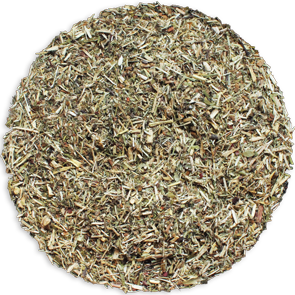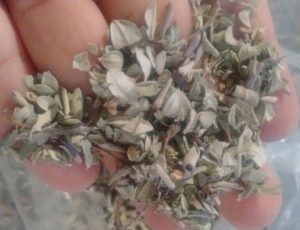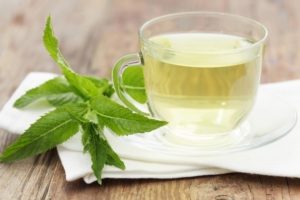Actúa como auxiliar en el mal aliento, auxiliar en combatir los cálculos biliares, estimula las funciones del hígado, limpia la piel y las manchas de paño.

Esta mezcla de Boldo Peumus boldus (Sirve para tratar dolencias digestivas y reduce el riesgo de padecer cálculos biliares y depura el hígado), Alcachofa Cynara scolymus (ayuda a eliminar toxinas, especialmente ácido úrico, y evita la retención de líquidos. Estimula la producción de bilis y resulta benéfica para las enfermedades hepáticas). Cardosanto Cnicus benedictus (Actua sobre la cirrosis, hepatitis, hígado graso, envenenamiento hepático. Impide el daño hepático y renal provocado por medicamentos. Sirve para el tratamiento de la hepatitis crónica, hepatitis aguda y esteatosis hepática. Puede normalizar los niveles de bilirrubina y restaurar los tejidos dañados), Prodigiosa Brickellia cavanillesii (Ayuda a eliminar colesterol, triglicéridos, ácido úrico y controla los altos niveles de azúcar en la sangre Es para la «bilis»para el que más se emplea esta planta), Cuaxia Quassia amara (Digestivo, y para tratar la fiebre, aumenta la secreción de las glándulas salivales, jugos gástricos y biliares).
Tomar 1 o 3 tazas al día antes de cada alimento. Este producto no debe ser sustituido por ninguna dieta variada ni tampoco sustituye a ningún medicamento.

Siempre es bueno estar informado al 100% y consultar con tu médico de confianza antes de tomar cualquier suplemento.
Producto 100% natural, su uso está destinado al consumo como alimento.
EL CONSUMO DE ESTE PRODUCTO ES RESPONSABILIDAD DE QUIEN LO RECOMIENDA Y DE QUIEN LO USA
REFERENCIAS
1)Variation of the alkaloid content of Peumus boldus (boldo).
Fuentes-Barros G, Castro-Saavedra S, Liberona L, Acevedo-Fuentes W, Tirapegui C, Mattar C, Cassels BK.Fitoterapia. 2018 Jun;127:179-185. doi: 10.1016/j.fitote.2018.02.020. Epub 2018 Feb 14.PMID: 29454020
Eighteen alkaloids were detected in the bark, leaves, wood and roots of Peumus boldus, including traces of secoboldine, N-methylsecoboldine (boldine methine), glaucine and norreticuline, not reported previously as constituents of this species. …
Ardalani H, Jandaghi P, Meraji A, Hassanpour Moghadam M.Complement Med Res. 2020;27(1):40-46. doi: 10.1159/000502280. Epub 2019 Sep 4.PMID: 31484191 Clinical Trial. English.
BACKGROUND: Recent studies have suggested that artichoke (Cynara scolymus L.) may reduce certain biochemical blood factors but the efficacy of this plant on blood pressure (BP) has not yet been investigated. …METHODS: The total phenolic content and gas chromatogra …
Paun G, Neagu E, Moroeanu V, Albu C, Savin S, Lucian Radu G.Biomed Res Int. 2019 Mar 12;2019:3692605. doi: 10.1155/2019/3692605. eCollection 2019.PMID: 30993111 Free PMC article.
This study evaluated the biological activities of Eryngium planum and of Cnicus benedictus extracts enriched in polyphenols obtained by nanofiltration. …Herein, there is the first report of ursolic acid, genistin, and isorhamnetin in E. planum and C. benedictus …
4) alpha-glucosidase inhibitors from Brickellia cavanillesii.
Escandón-Rivera S, González-Andrade M, Bye R, Linares E, Navarrete A, Mata R.J Nat Prod. 2012 May 25;75(5):968-74. doi: 10.1021/np300204p. Epub 2012 May 15.PMID: 22587572
An aqueous extract from the aerial parts of Brickellia cavanillesii attenuated postprandial hyperglycemia in diabetic mice during oral glucose and sucrose tolerance tests. Experimental type-II DM was achieved by treating mice with streptozotocin (100 mg/kg) and beta …
García-Barrantes PM, Badilla B.J Ethnopharmacol. 2011 Apr 12;134(3):904-10. doi: 10.1016/j.jep.2011.01.052. Epub 2011 Feb 4.PMID: 21296139
AIM OF THE STUDY: Quassia amara L. is commonly used in Costarican folk medicine. It has been used for the treatment of a broad range of gastrointestinal symptoms such as dyspepsia, gastritis and constipation. …Ligas() did not produce a significant change (p>0.0 …


